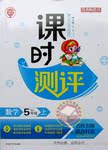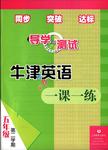题目内容
In South America, the rich soil of the Amazon River basin(流域)in Brazil is known as “black gold”. Scientists found that the secret of this rich soil was charcoal(木炭). Local people made it from animal bones and tree branches. They mixed the charcoal with the soil about 1.500 years ago.
Now, scientists in the United States have done a modern demonstration. They say charcoal fertilization offers a revolutionary way to improve soil quality for hundreds or even thousands of years.
Mingxin Guo and his team at Delavare State University heated tree leaves, corn stalks(茎), small pieces of wood and poultry waste into “biochar”(生物碳). They reported their findings at a recent meeting of the American Chemical Society in New Orleans.
Biochar could be good news for farmers with poor soil and hungry populations to feed. Professor Guo says it could even help against global warming. Intensive(集约的) farming and overuse of chemical fertilizer give out carbon dioxide into the atmosphere. Biochar does the opposite, he says. It traps carbon in the ground.
The researchers planted winter wheat in containers of soil in a greenhouse — some with biochar, some without. Professor Guo says the wheat grows much better in the pots with biochar. The soil was added two percent charcoal to. But he says even a one percent treatment will increase productivity.
The results demonstrated that biochar can increase organic matter in soil. Loss of nutrients in soil is an increasing problem worldwide as farmers try to grow more food for growing populations.
Next, the team will carry out a five-year study of biochar with spinach(菠菜), green peppers and tomatoes.
Mingxin Guo says he learns about the “black gold” in Brazil from a magazine story. He explains that it was discovered in the jungle, in the area where waters flow to the Amazon, in the 1960’s. But it was not until recent years that scientists began to bring public attention to it.
1.According to the passage, which of the following statements is TRUE?
A.The researchers will go on proving their theory.
B.The leading researcher learns the theory from the magazine.
C.Charcoal was discovered 1,500 years ago.
D.Common farming can produce more carbon dioxide.
2.Biochar has the following advantages EXCEPT that ________.
A.it can improve the condition of the soil
B.it can be used as a kind of energy
C.it can help against global warming
D.it can increase productivity of the corn
3.According to the research, the biochar can help against global warming because it can ________.
A.reduce the carbon dioxide
B.keep the carbon in the soil
C.reduce the loss of nutrients in the soil
D.absorb the carbon dioxide
4.Which of the following can be the best title of the passage?
A.Using Charcoal to Make soil into “Black Gold”
B.Using Charcoal to Reduce the Carbon Dioxide
C.How Amazon River Basin Produces “Golden Black”
D.Guo’s Research on Producing Biochar
1.A
2.B
3.B
4.A
【解析】
试题分析:本文主要讲述的是科学家对于生物碳的研究,生物碳有很多的好处,能够让我们的土壤更肥沃,能够抵抗全球变暖还能增加产量。
1.A 推理题。根据文章倒数第二段Next, the team will carry out a five-year study of biochar with spinach(菠菜), green peppers and tomatoes.可知还有一个新的5年计划来研究生物碳。说明研究人员还将继续他们的研究。故A正确。
2.B 细节题。根据They say charcoal fertilization offers a revolutionary way to improve soil quality for hundreds or even thousands of years.和t could even help against global warming. Intensive(集约的) farming and overuse of chemical fertilizer give out carbon dioxide into the atmosphere. Biochar does the opposite, he says. It traps carbon in the ground.和Professor Guo says the wheat grows much better in the pots with biochar. The soil was added two percent charcoal to. But he says even a one percent treatment will increase productivity.可知ACD三项都是生物碳的好处。只有B项文章没有提及。
3.B 细节题。根据文章第四段最后一句. It traps carbon in the ground.可知B项,也就是它能够让碳被保留在土壤里。故B正确。
4.A 主旨大意题。本文主要讲述的是科学家对于生物碳的研究,生物碳有很多的好处,能够让我们的土壤更肥沃,能够抵抗全球变暖还能增加产量。故A正确。
考点:考察科普类短文阅读

 唐印文化课时测评系列答案
唐印文化课时测评系列答案 导学与测试系列答案
导学与测试系列答案